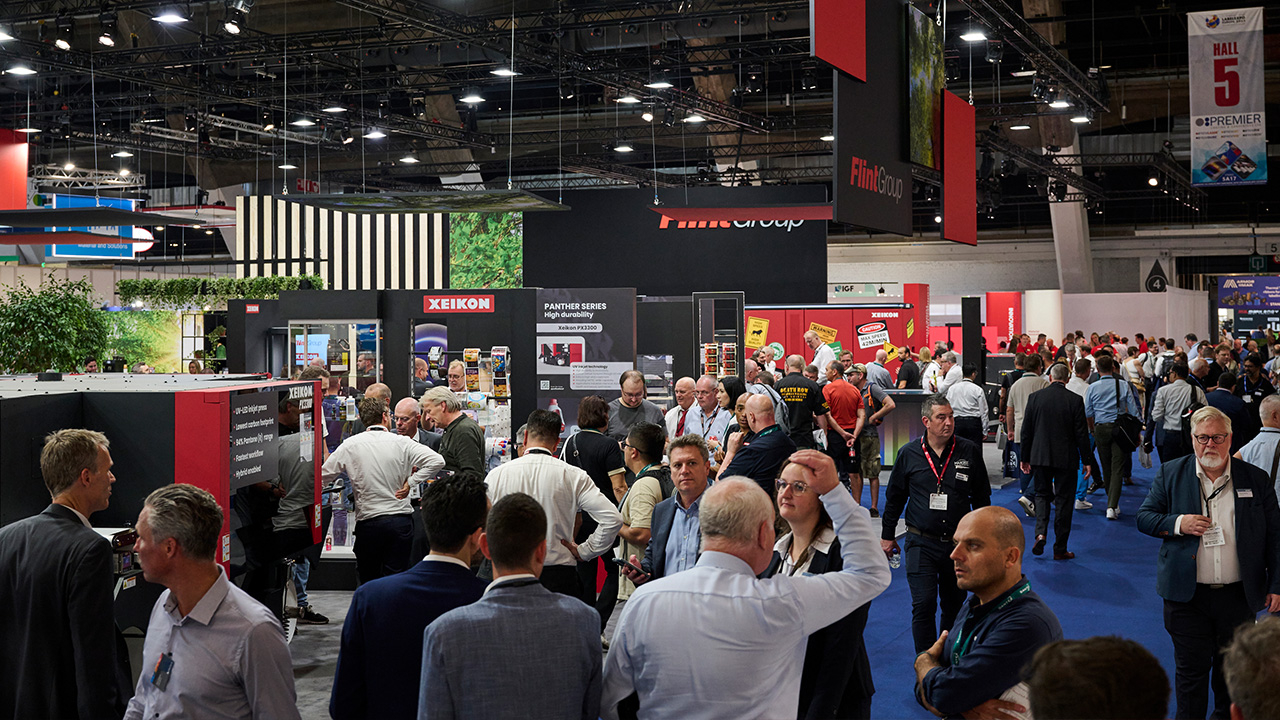Bringing ideas to life
Prototyping is a crucial stage of the packaging design process.
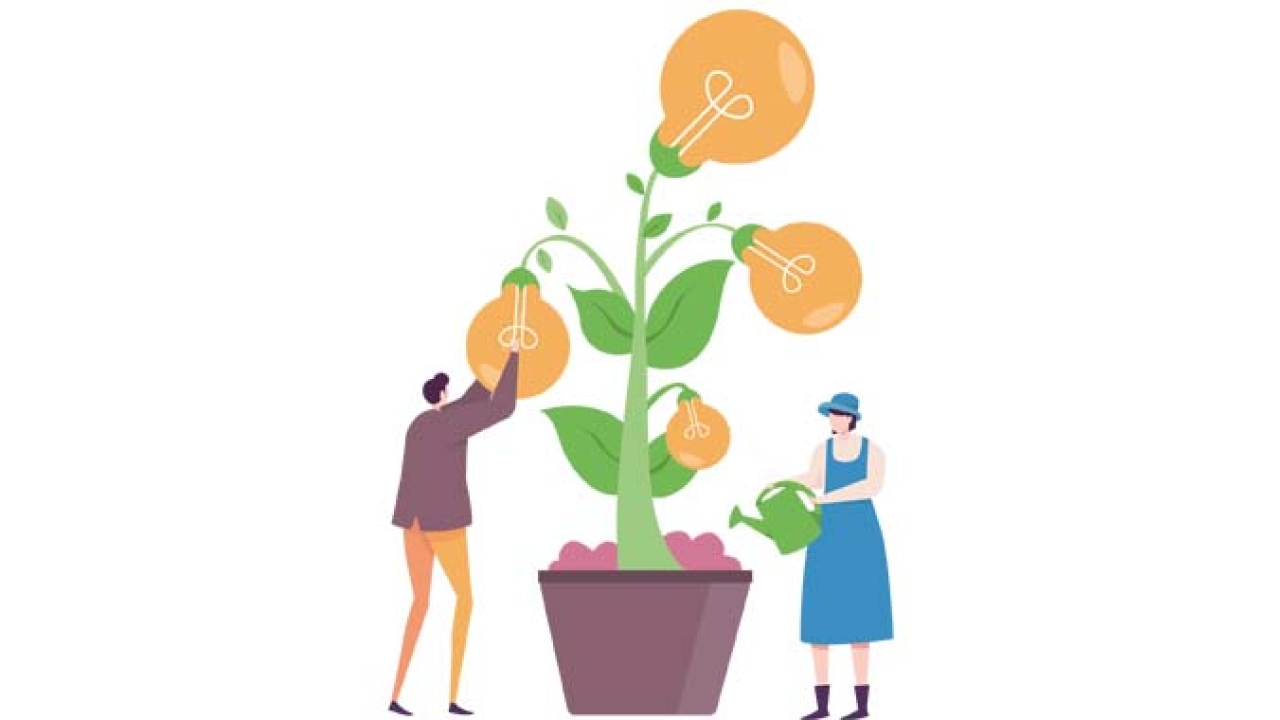
Like many roles in the business world, I do a lot of my ‘pen to paper’ work alone. At my desk. With two giant monitors displaying my designs-in-progress. Yes, I meet extensively with clients, conceptualize with creative teams, review research with marketing, collaborate with CEOs, CMOs, brand managers, creative directors, production managers and converters. But much of my design work happens when no one is around. Because of this, most of my clients think that when I finish designing the graphics for a package, the design process is complete.
They would be wrong.
There is an indispensable next phase of successful packaging design: prototyping. Anyone who is versed in ‘design thinking’ recognizes that prototyping is an essential step of an agile, iterative design process. ‘In prototyping, you give your concepts detail, form and nuance – you bring them to life,’ says Jeanne Liedtka, professor of business administration at University of Virginia’s Darden Graduate School of Business, in her book Designing for Growth.
When brands prototype, they are often exploring several design concepts, forms, substrates, and/or finishing techniques. It’s an eye-opening way for us to test the concepts and even break through some of the safer options and try more unique approaches.
A case in point
This type of design thinking was evident in a recent re-branding I did for Wildfare, a specialty food brand. I partnered with Cog LLC, a highly-regarded package development and prototyping studio that specializes in secondary packaging. We quickly realized how crucial prototyping would be for Wildfare’s new labels and packaging. Why? First, Wildfare’s print supply chain is dispersed throughout the world. Prototyping their new labels became the benchmark for printers and converters throughout their supply chain.
‘Our prototyped labels are the standard-bearer for the quality we expect from our suppliers stateside and abroad,’ says Melissa Clemente, marketing director for Wildfare.
Second, because Wildfare is a premium brand of food products derived ‘from the Mediterranean Soil & Sun’, it requires premium packaging to connect with its consumers and brand story. We opted for metallics to enhance the luxury nature of the new packaging.
Even with a strong onscreen or PDF mock-up, metallic options are difficult to envision in a design. In order for us to know exactly how the packaging would look in real life – in three dimensions – we knew we needed the power of prototyping. We wanted to ensure that the final design would look and feel the way we imagined, while leveraging our budget and engaging shoppers. After all, successful packaging must have shelf appeal to attract and engage shoppers and create confidence and trust once they get the product home.
I worked closely on the Wildfare prototyping with Lindsey Frimming, partner and chief innovation officer at Cog, who put it this way: ‘Whether it’s fragrance or food, if the packaging doesn’t stand out on the shelf, the consumer is going to just keep moving.’
Experiencing design in the physical world
After much consideration, I’ve compiled the top three advantages of package prototyping: touch, experience and sight. Let’s start with touch. Holding a packaging design in the physical world, rather than
just seeing it onscreen, feels very different. We can turn it in every direction, test it in different lighting, and trust it because it is a physical object.
In prototyping, you give your concepts detail, form and nuance – you bring them to life
People are often surprised at their response to touching a prototype; they don’t foresee how powerful the real-world, physical piece will be, especially because they have every confidence in our onscreen design. The prototype takes it to the next level.
When I prototype with Cog, we often do it in two stages – first for structure, shape and substrate; second for exploring different finishes. ‘All you have to do is look on store shelves to see how important touch is,’ says Lindsey. And we know from research that once a shopper picks up a product from the shelf, they are more likely to put it in their cart and purchase it.
Having a product design to experience in the third dimension is important for the purchasing manager and/or for a consumer test panel, too. Elements that drive touch will usually add cost to the packaging. Brands need to make sure that their investment will pay off.
The ‘wow’ factor
With social media influencers and brand fans ‘unboxing’ their purchases on various platforms, the most successful packaging today needs to provide a unique consumer experience. Is there printing on the inside of the box? Is there a hidden drawer? Does the packaging align with expectations that the shopper had when they ordered online? Or is it simply beautiful packaging that makes the viewer think, ‘Wow, I want to experience that product’. It’s nearly impossible to know if your customer experience will create a ‘wow’ sensation without prototyping it as part of the design process. Prototyping is a brand’s secret weapon, especially with tens of thousands (or hundreds of thousands) of dollars invested.
While brands are typically very confident when reviewing packaging mock-ups online or in PDFs, nothing compares to seeing-is-believing.
‘Let’s say you’re going to use a foil that’s represented on the PDF by a colorized gradient,’ says Lindsey. ‘The simulating software will do a great job, but you still won’t know if the type will be readable in all different light sources. Or what if the foil flashes too dark? A lot of variables can’t be replicated onscreen. If it’s worth the extra budget for a premium finish, it’s worth the more modest cost of prototyping to make sure you get the shelf impact and success that you’re looking for.’
The magic of ‘what-if’
When it comes to prototyping, it’s not just about ‘what is’; it’s also about ‘what if’. Without prototyping, so many things can go wrong. The print quality may not come out as the designer and brand envisioned; the dieline might fail; the unboxing experience may be flawed. But the actual risk, says Lindsey, is that ‘brands risk not having the opportunity to truly engage the consumer’s senses and ultimately win on the shelf’.
We wanted to ensure that the final design would look and feel the way we imagined
Recalling another prototyping win, Lindsey talks about a recent project for a leading personal care brand. The original parameters were to prototype different ways to highlight the brand logo and new imagery, using the same elements across the entire product line. But the brand gave Lindsey and her team the freedom to explore. With that freedom, Cog was able to show the brand a unique tactile varnish effect for each of the seven SKUs – something the brand’s design team might never have had a chance to consider.
Lindsey adds that she also worked with the printer to ensure that the finishing being proposed accurately represented the printer’s capabilities. ‘Once you know what the printer can do, that’s when the ‘what-ifs’ start to form beautiful packaging and you get a consistently elevated shelf presence and consumer response.’
In other words, that’s when the magic of prototyping happens, bringing together the elements of design, imagination, exploration, touch, sight, experience, and ultimately the ability to confidently select the winning packaging.
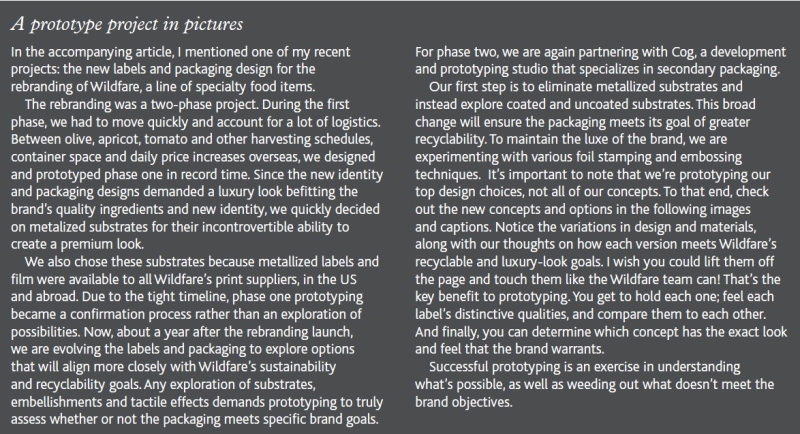
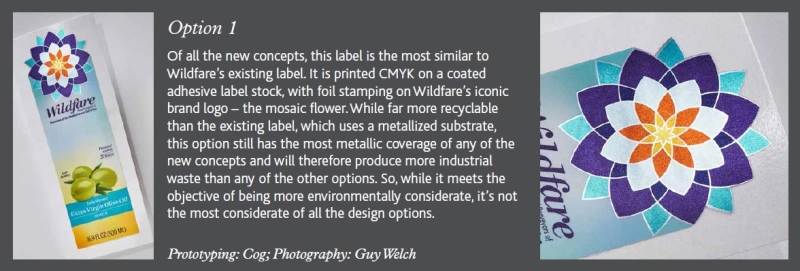
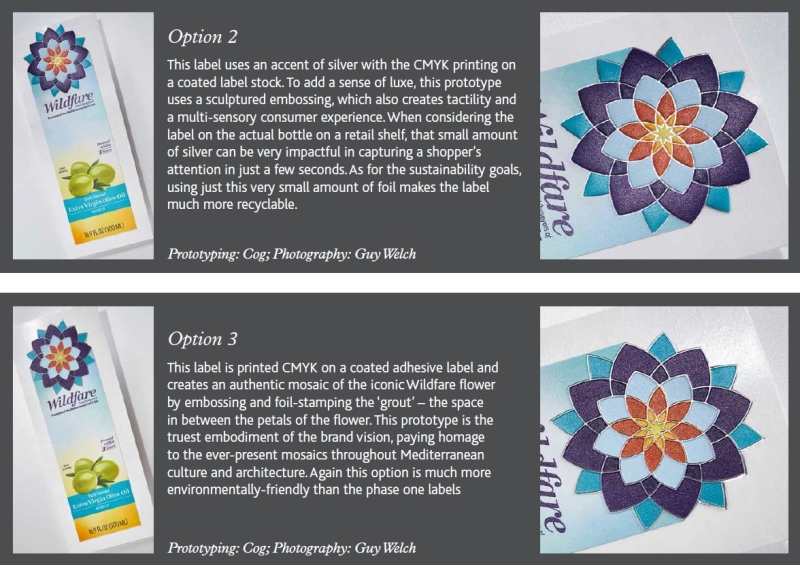
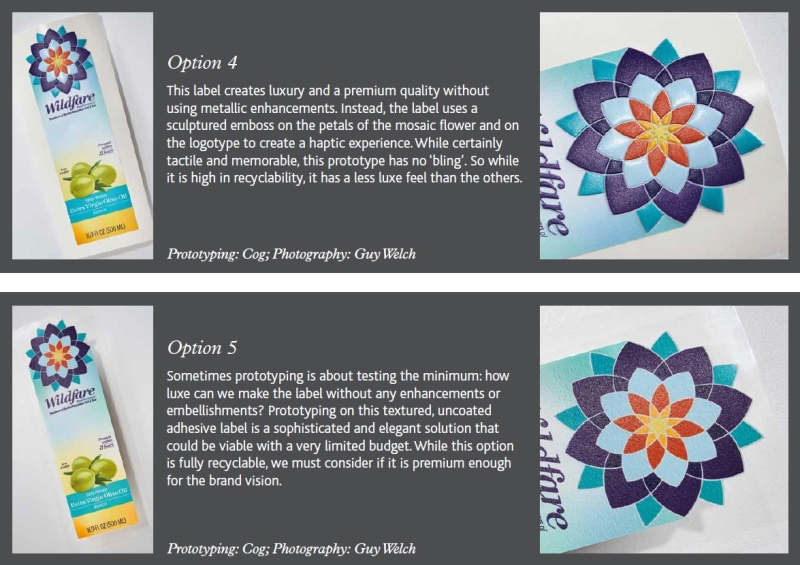
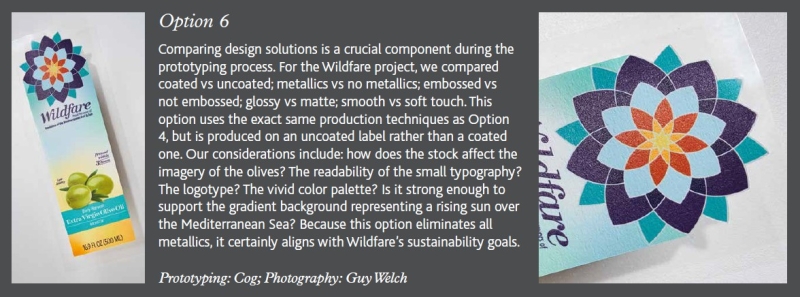
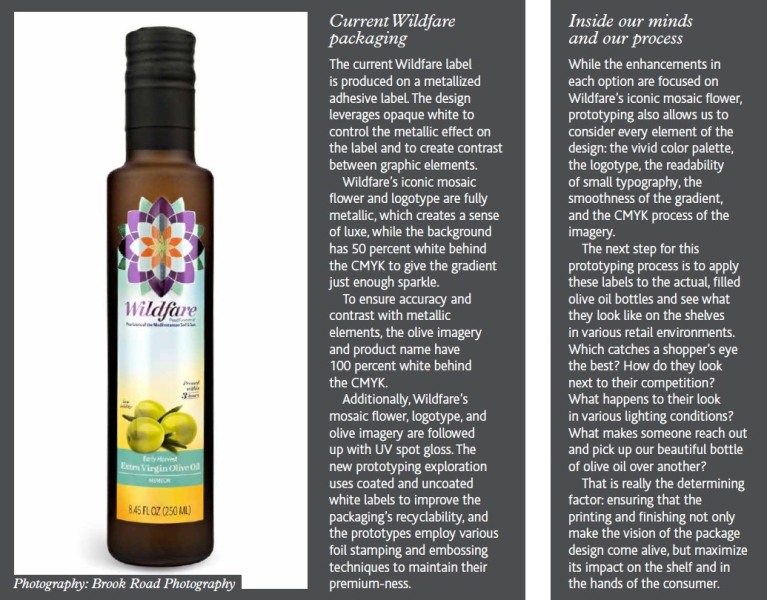
Stay up to date
Subscribe to the free Label News newsletter and receive the latest content every week. We'll never share your email address.

